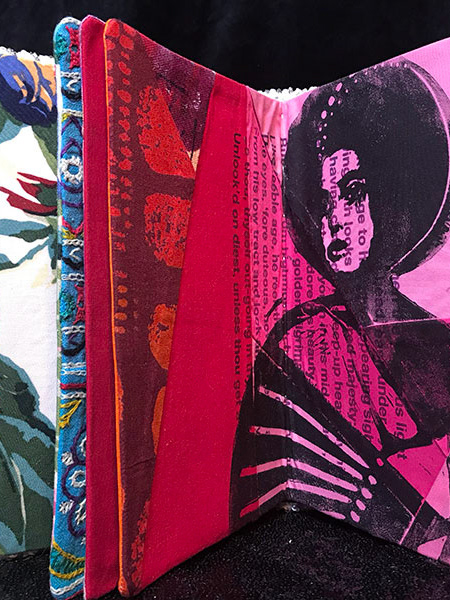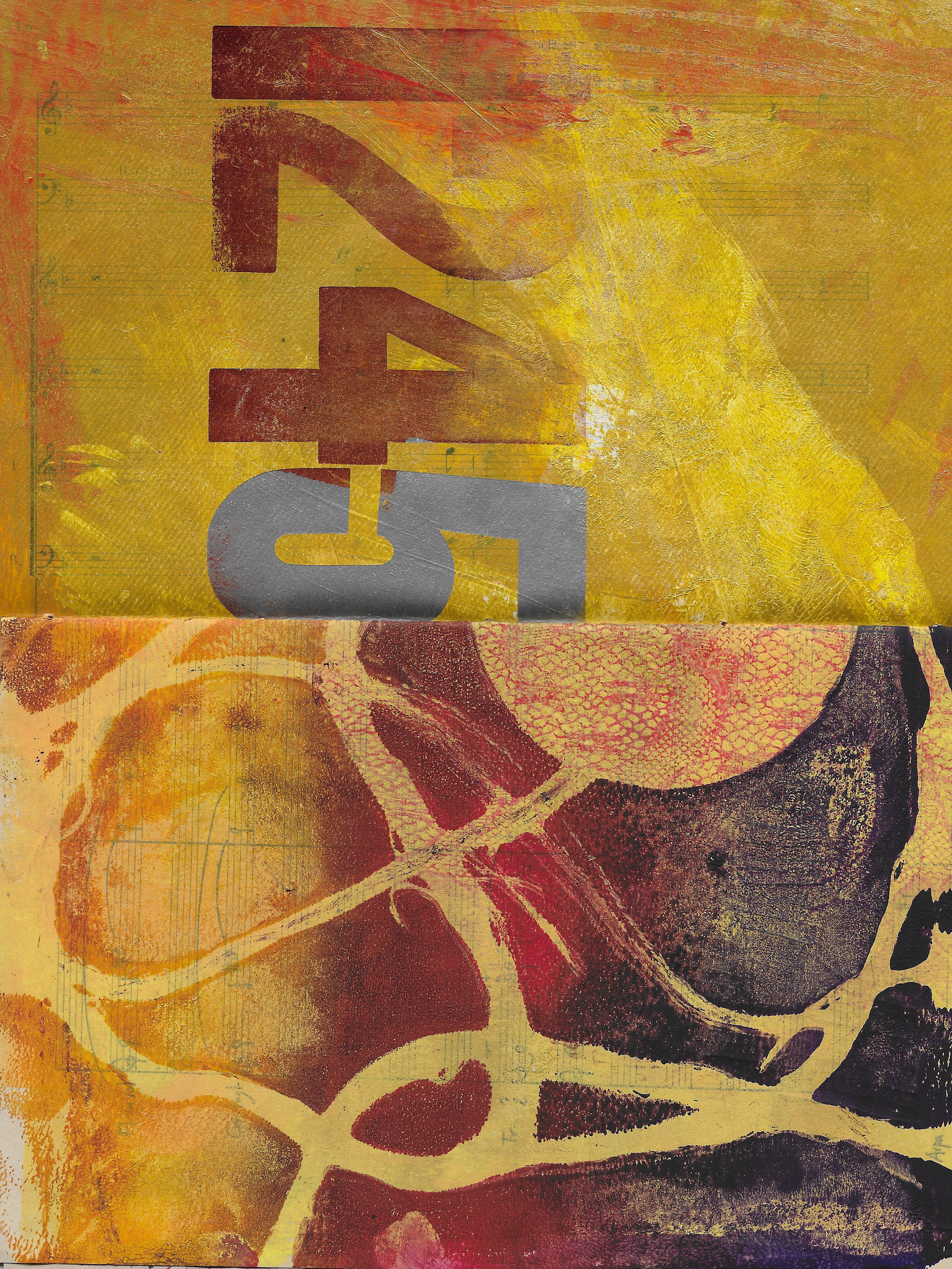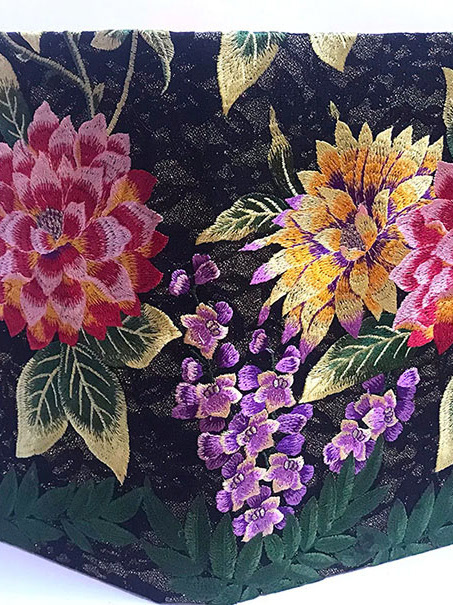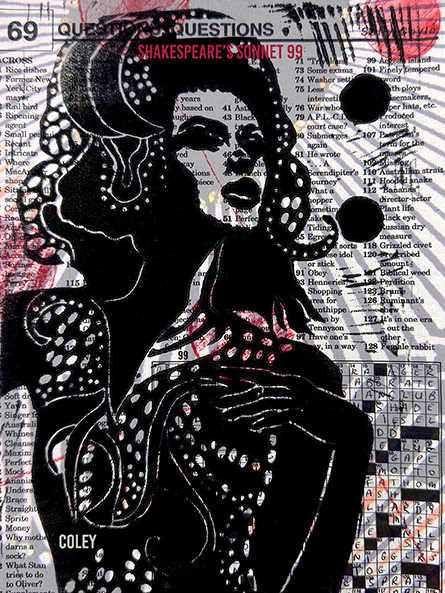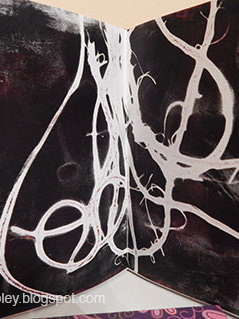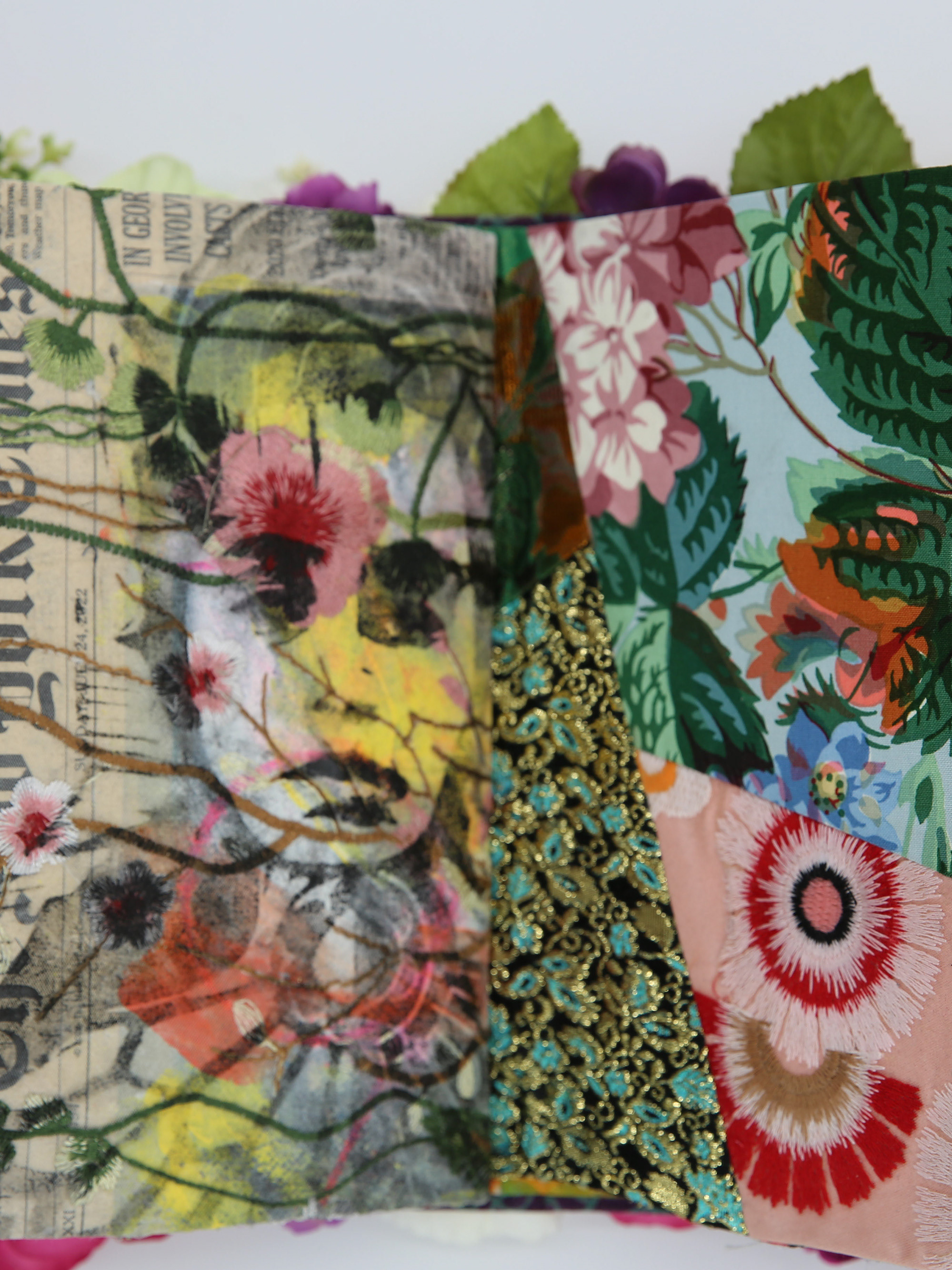"On its surface, the embroidered cover invokes the aristocratic traditions of 16th through 18th century Europe, where noblewomen labored over needlework skills and expensive metallic threads to bind devotional texts and poetry. These bindings were markers of wealth, refinement, and permanence. They were objects made to admire as much as read.
"But once opened, the interiors of my books tell a different story. The pages are quilted, stitched from scraps, printed with linocuts and silkscreens on fabric, recalling the resourceful traditions of African American sharecropper quilting.
"Here, women transformed fragments of discarded cloth into memory, beauty, and survival. If the covers speak in the language of courtly ornament, the interiors speak in the language of necessity and endurance.
"The contradiction between outside and inside is deliberate. Together they form a palimpsest of women's work across class, race, and geography. They span European courts to Southern American cotton fields, from ornamental embroidery to survival-driven quilting. Both traditions are rooted in undervalued labor, often dismissed as craft. By binding them together, I challenge the hierarchy of "fine" and "folk" art, asserting instead that both belong to a continuous, global history of what I call "women's fine fingers".
"Shakespeare's sonnets resonate in the structure. Like the embroidered covers, the sonnets inherit formal tradition and rhetorical polish. Like the quilted pages, they fracture and resist, revealing human truths beneath idealized conventions."
Suzanne Coley

